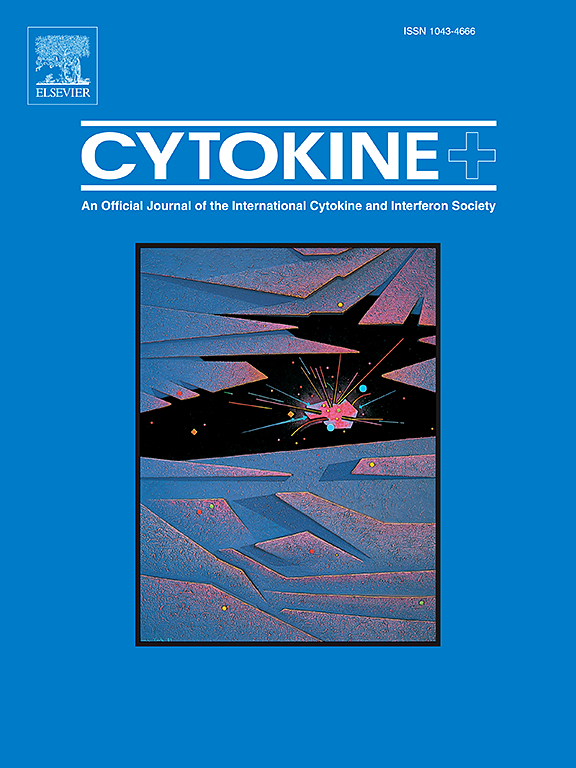Decreased serum VEGF, NRG1, and Neuropilin-1 levels in male patients with treatment-resistant schizophrenia: implications for VEGF as a protective factor
IF 3.7
3区 医学
Q2 BIOCHEMISTRY & MOLECULAR BIOLOGY
引用次数: 0
Abstract
Background
Vascular endothelial growth factor (VEGF), Neuregulin-1 (NRG1), and Neuropilin-1 are important neurotrophic factors involved in neurodevelopment, synaptic plasticity, and neuroprotection processes implicated in schizophrenia pathophysiology. This study aimed to investigate the expression patterns of these markers and their clinical implications in male patients with treatment-resistant schizophrenia (TRS) and chronically medicated schizophrenia (CMS).
Methods
In this cross-sectional study, serum levels of VEGF, NRG1β1, neuropilin-1, S100B, and S100A8 were measured using the Luminex liquid suspension chip technology in 31 TRS patients, 47 CMS patients, and 47 healthy controls. Psychiatric symptoms and cognitive function were assessed using the Positive and Negative Syndrome Scale (PANSS) and the Repeatable Battery for the Assessment of Neuropsychological Status (RBANS).
Results
VEGF levels were significantly lower in TRS versus controls (P < 0.001), with no significant difference between TRS-CMS (P = 0.053) or CMS-controls (P = 0.051). NRG1β1 was significantly reduced in both TRS (P = 0.003) and CMS (P < 0.001) groups compared to controls. Neuropilin-1 decreased significantly only in the TRS group versus controls (P = 0.029). No significant difference was observed in S100B and S100A8 levels across all groups (all P > 0.05). Correlation analysis revealed a negative association between NRG1β1 levels and positive scores (r = −0.355, P = 0.014), and a significant positive correlation between VEGF levels and language function (r = 0.313, P = 0.032) in CMS patients. Additionally, VEGF demonstrated potential protective properties in TRS patients (B = -1.098, RR = 0.333, 95 %CI: 0.131–0.849, P = 0.021).
Conclusion
VEGF may serve as a protective factor against TRS, with its reduction possibly contributing to treatment resistance. The positive correlation between VEGF and language function suggests its role in cognitive processes, highlighting its potential as a biomarker in schizophrenia treatment.

治疗难治性精神分裂症男性患者血清VEGF、NRG1和Neuropilin-1水平降低:VEGF作为保护因子的意义
背景:血管内皮生长因子(VEGF)、神经调节蛋白-1 (NRG1)和神经匹林-1是重要的神经营养因子,参与神经发育、突触可塑性和精神分裂症病理生理相关的神经保护过程。本研究旨在探讨这些标志物在男性难治性精神分裂症(TRS)和慢性药物性精神分裂症(CMS)患者中的表达模式及其临床意义。方法:采用Luminex液悬芯片技术检测31例TRS患者、47例CMS患者和47例健康对照者血清中VEGF、NRG1β1、neuropilin-1、S100B、S100A8的水平。采用Positive and Negative Syndrome Scale (PANSS)和Repeatable Battery for Assessment of Neuropsychological Status (RBANS)评估精神症状和认知功能。结果:TRS组VEGF水平明显低于对照组(P < 0.05)。相关分析显示,CMS患者NRG1β1水平与阳性评分呈负相关(r = -0.355, P = 0.014), VEGF水平与语言功能呈显著正相关(r = 0.313, P = 0.032)。此外,VEGF在TRS患者中显示出潜在的保护作用(B = -1.098, RR = 0.333, 95% CI: 0.131-0.849, P = 0.021)。结论:VEGF可能是抗TRS的保护因子,其降低可能与治疗耐药有关。VEGF与语言功能之间的正相关表明其在认知过程中的作用,突出了其作为精神分裂症治疗生物标志物的潜力。
本文章由计算机程序翻译,如有差异,请以英文原文为准。
求助全文
约1分钟内获得全文
求助全文
来源期刊

Cytokine
医学-免疫学
CiteScore
7.60
自引率
2.60%
发文量
262
审稿时长
48 days
期刊介绍:
The journal Cytokine has an open access mirror journal Cytokine: X, sharing the same aims and scope, editorial team, submission system and rigorous peer review.
* Devoted exclusively to the study of the molecular biology, genetics, biochemistry, immunology, genome-wide association studies, pathobiology, diagnostic and clinical applications of all known interleukins, hematopoietic factors, growth factors, cytotoxins, interferons, new cytokines, and chemokines, Cytokine provides comprehensive coverage of cytokines and their mechanisms of actions, 12 times a year by publishing original high quality refereed scientific papers from prominent investigators in both the academic and industrial sectors.
We will publish 3 major types of manuscripts:
1) Original manuscripts describing research results.
2) Basic and clinical reviews describing cytokine actions and regulation.
3) Short commentaries/perspectives on recently published aspects of cytokines, pathogenesis and clinical results.
 求助内容:
求助内容: 应助结果提醒方式:
应助结果提醒方式:


